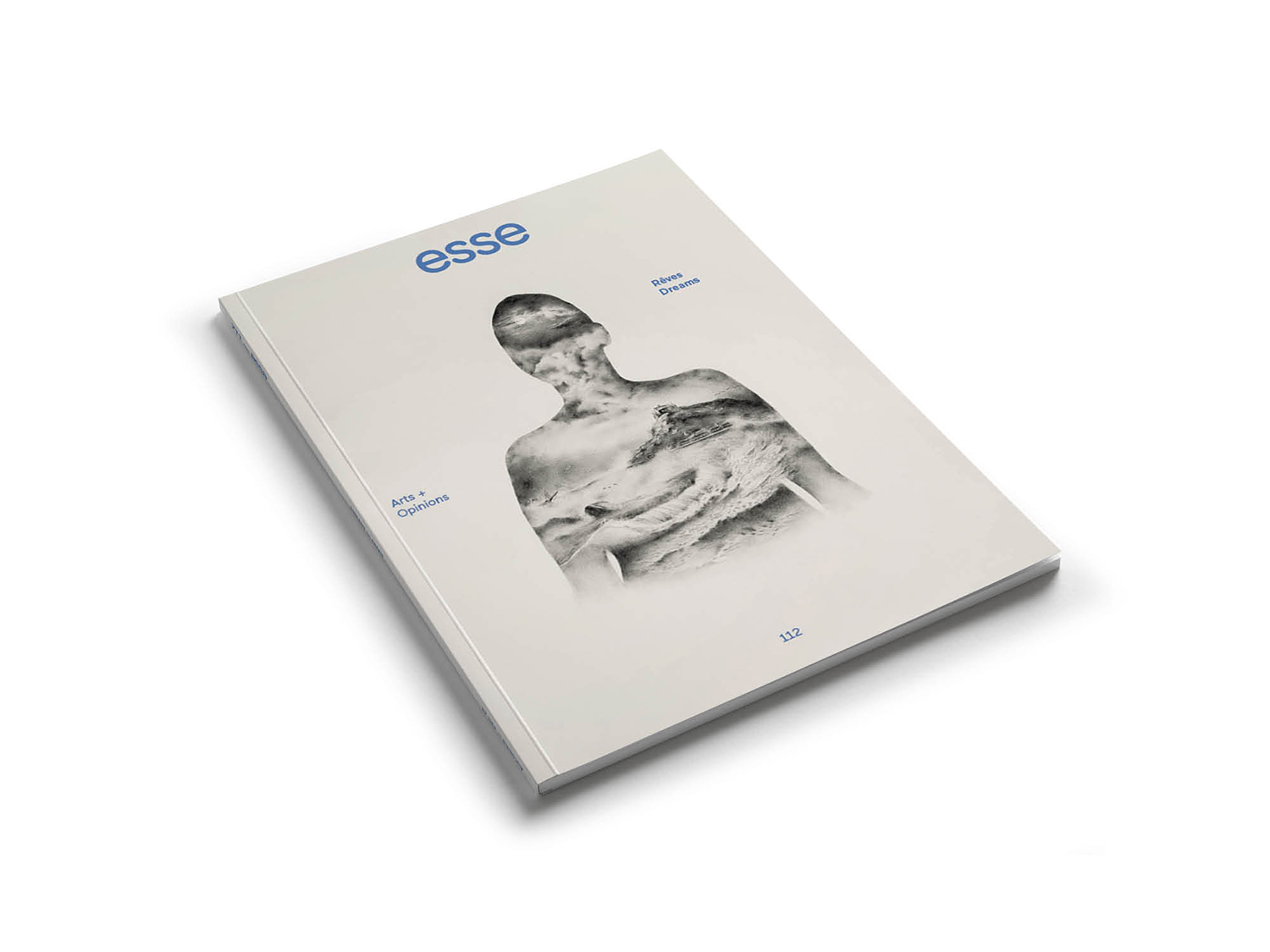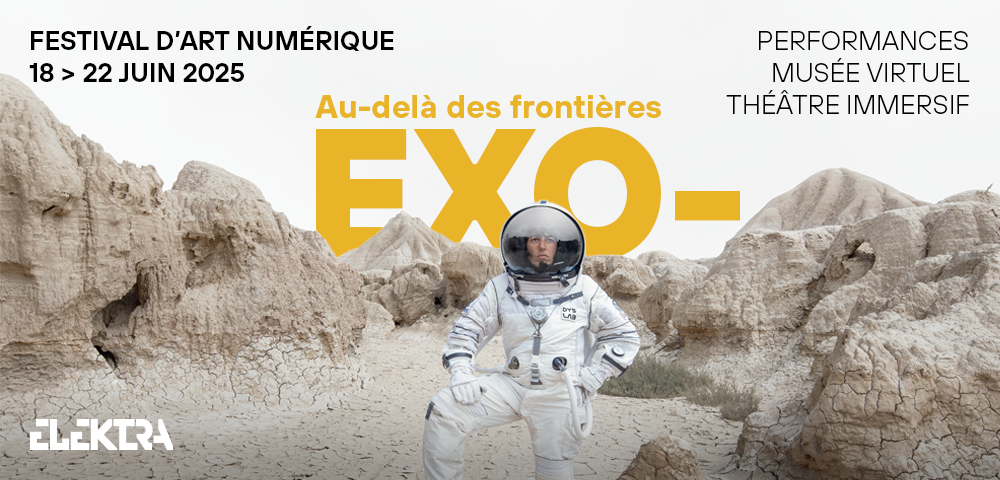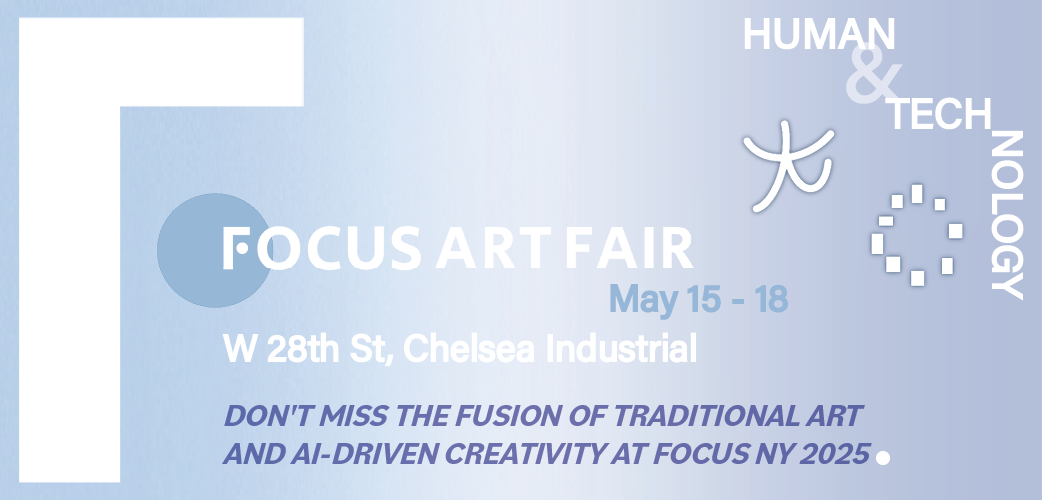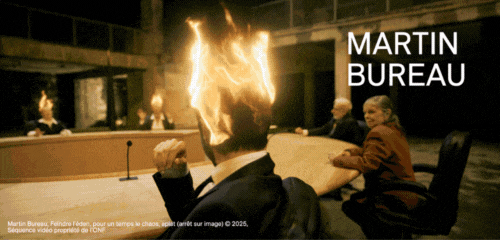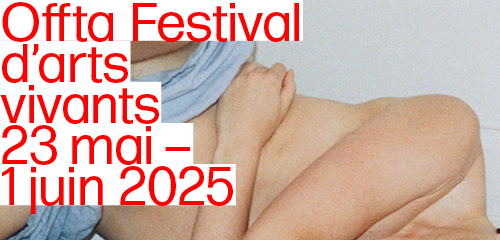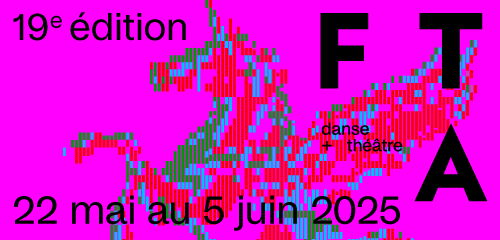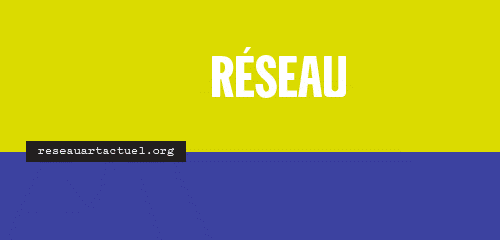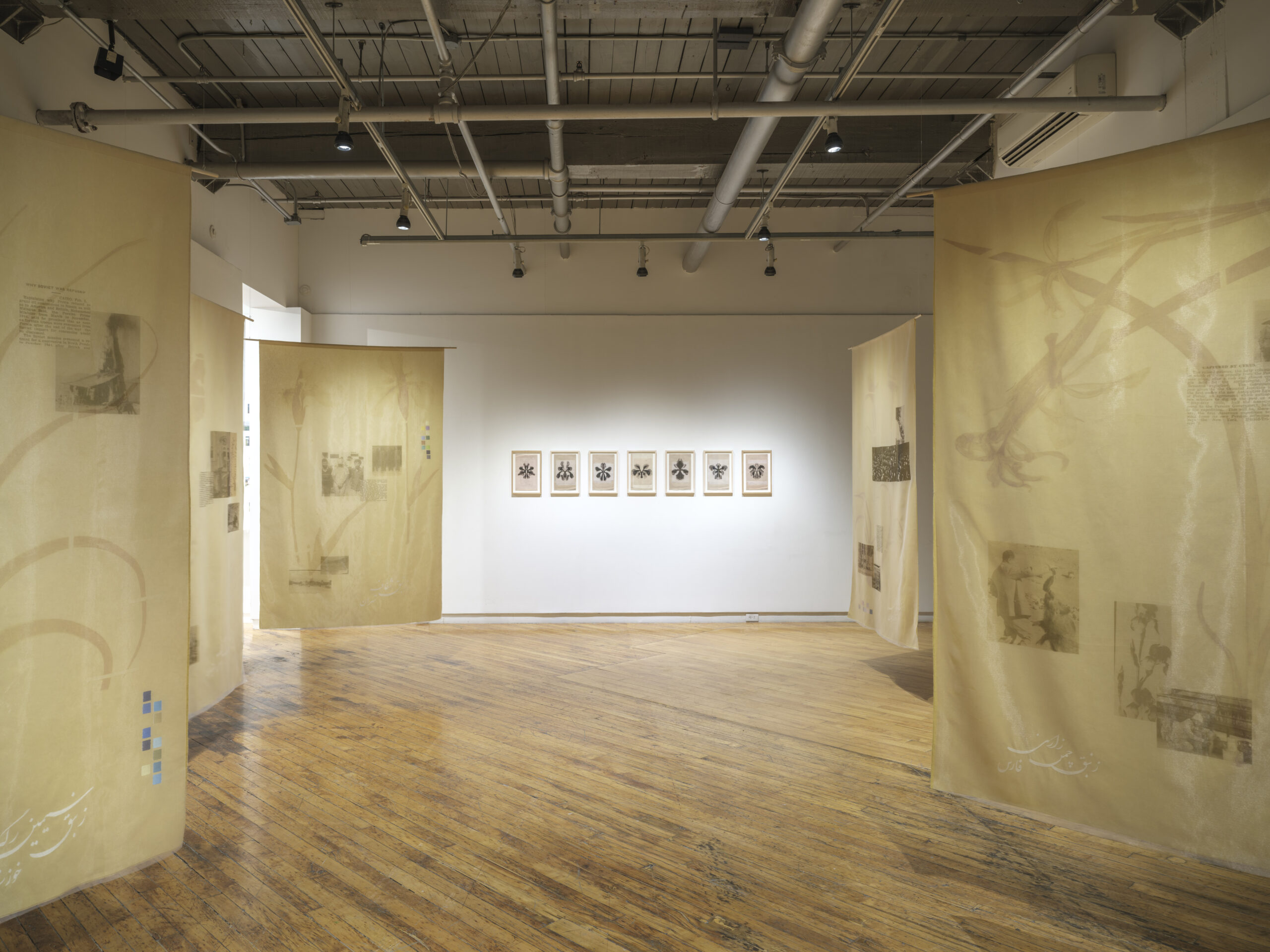
Photo: Darren Rigo, courtesy of the artist and Nicholas Robert Gallery, Montréal
[En anglais]
Historically, cycles of European and American colonization have had detrimental cultural impacts on Middle Eastern populations. Iranian artist Anahita Norouzi examines forced occupations, with a focus on entanglements between Western botanical research and exploitative imperialist endeavours. In a recent exhibition, Systema Naturae,she explored themes of historical displacement and hostility in relation to colonialist practices in the Middle East. The works that she presented unravel the role of scientific research in the justification of natural-resource extraction; inviting discussion around migration, alienation, and the lasting impact of exploitation through a botanical lens, she homed in on the Persian iris native to Iran. She utilized several printmaking methods in combination with archival reference material sourced from Western herbariums to foster a delicate reflection of fossil fuel extraction in the Middle East. The discussion that she provokes remains important today, with displacement and cultural cleansing continuing to be imposed by predatory regimes. It is particularly relevant in light of the current genocide of the Palestinian population politically sanctioned by powerful Western nations. Norouzi introduces exploitation of natural resources, specifically fossil fuels, through a critical lens encouraging a broader reflection on Western obtrusion worldwide.
Six large textiles hung from the ceiling at the entrance to the gallery, creating a natural channel into the space. Past the textiles, along the far wall, were a series of framed monoprints of native Persian irises. The exhibition’s ambience was delicate and reflective, enhanced by the thin cloth, turmeric tinge, and floral motifs. The orange hues contrasted with the devastating scenes of persecution that created a cohesive narrative of cyclical oppression.
Créez-vous un compte gratuit ou connectez-vous pour lire la rubrique complète !
Mon Compte


